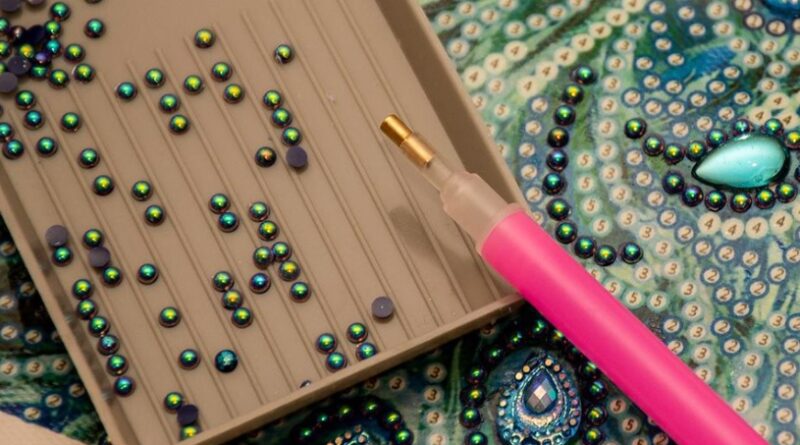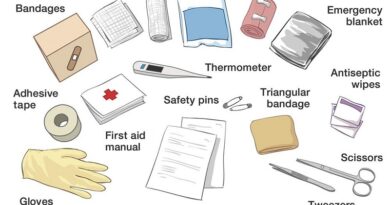6 Common Diamond Painting Mistakes and How to Avoid Them
Diamond painting has gained immense popularity as a relaxing and creative hobby. It combines the joy of crafting with the sparkling beauty of diamonds. However, even experienced diamond painters can make mistakes that can impact the final result. In a view to guide you with adaptable steps, we have just created this summary article stating 6 common mistakes in diamond painting art. Whether you are new to diamond painting or a seasoned enthusiast, these insights will ensure that your projects turn out beautifully.
Mistake #1: Neglecting Proper Preparation:
Proper preparation is key to achieving a flawless diamond painting. Failing to prepare adequately can result in a messy workspace, misplaced diamonds, and frustration. Two aspects of preparation that are often overlooked are unrolling the canvas without flattening it and not organizing the workspace efficiently.
a) Unrolling the Canvas without Flattening It:
When you receive your diamond painting kit, the canvas is typically rolled up. Neglecting to flatten it properly can lead to creases and wrinkles, making it difficult to place the diamonds accurately. To avoid this, lay the canvas on a flat surface and gently roll it in the opposite direction for a few hours or use heavy books to flatten it completely.
b) Insufficient Workspace Organization:
Keeping your workspace organized is crucial to avoid mixing up diamond colors or misplacing them altogether. Use small containers or a diamond painting accessories kit with individual compartments to store the diamonds. Additionally, label each container with the corresponding color code for easy identification and access.
Mistake #2: Inadequate Lighting:
Proper lighting is essential for diamond painting to accurately place the diamonds and achieve the desired effect. Insufficient lighting can strain your eyes and lead to errors in diamond placement.
a) Insufficient Natural Light:
Working in dimly lit areas or relying solely on artificial light can make it challenging to differentiate between diamond colors and shades. Whenever possible, choose a workspace near a window or a well-lit room to utilize natural light effectively.
b) Lack of Artificial Lighting:
In situations where natural light is insufficient or unavailable, ensure you have ample artificial lighting. Invest in a good-quality LED desk lamp or an adjustable light pad to illuminate your diamond painting area. These light sources provide even and bright lighting, minimizing the risk of errors while working.
Mistake #3: Rushing Through the Process:
Diamond painting is a soothing and meditative activity that requires patience and attention to detail. Rushing through the process can result in misaligned diamonds and an unfinished look.
a) Hasty Diamond Placement:
Placing diamonds hurriedly without ensuring they are properly aligned can lead to uneven rows and gaps. Take your time to press each diamond onto the canvas gently. Use a diamond painting pen or tweezers to ensure accurate placement and alignment.
b) Quick-Sealing without Verification:
Once you complete a section, it is important to verify that all the diamonds are properly secured before moving on. Hastily sealing the diamonds without checking can result in loose or misplaced diamonds. Run your hand or a rolling pin over the completed section to firmly secure the diamonds in place.
Mistake #4: Incorrect Diamond Sorting and Identification:
Sorting and identifying diamond colors correctly is crucial for a successful diamond painting experience. Mistakes in this aspect can lead to using the wrong colors or misinterpreting symbols, ultimately affecting the outcome.
a) Mixing Diamond Colors:
Failing to keep diamond colors separate can be a recipe for disaster. When sorting the diamonds, use individual containers or the provided bags to keep each color separate. Avoid mixing them up, as similar shades can cause confusion and lead to using the wrong colors.
b) Misreading or Misinterpreting Symbols:
Diamond paintings come with a symbol chart that corresponds to the canvas. Misreading or misinterpreting these symbols can lead to using the wrong colors or placing diamonds incorrectly. Double-check each symbol before placing the corresponding diamond to ensure accuracy.
Mistake #5: Neglecting to Cover the Adhesive:
The adhesive layer on the canvas acts as the base for the diamonds. Neglecting to cover it properly can result in dust and dirt accumulation or diamonds not adhering securely.
a) Leaving Large Sections Uncovered:
When working on large diamond painting projects, it can be tempting to uncover a significant portion of the adhesive to speed up the process. However, this exposes the adhesive to the surrounding environment, making it vulnerable to dirt, dust, or accidental spills. It is advisable to uncover only small sections at a time to maintain the adhesive’s integrity.
b) Incomplete Adhesive Coverage:
Ensure that the adhesive is completely covered before starting to work on a section. Incomplete coverage can lead to diamonds not adhering securely or falling off over time. Take your time to press the diamonds firmly onto the adhesive, ensuring full coverage and a lasting bond.
Mistake #6: Not Using a Roller:
Using a roller is a crucial step in achieving a smooth and polished look for your diamond painting. Neglecting to use a roller can result in uneven diamond placement and insufficient long-term adhesion.
a) Uneven Diamond Placement:
After placing the diamonds on the adhesive, gently roll a diamond painting roller or a rolling pin over the completed section. This step ensures that all the diamonds are evenly pressed onto the canvas, creating a cohesive and professional appearance.
b) Lack of Long-Term Adhesion:
The rolling process also helps enhance the long-term adhesion of the diamonds to the canvas. Without using a roller, the diamonds may not adhere as firmly, leading to potential issues like diamond loss or lifting over time. Secure your hard work by rolling over each completed section to create a solid bond.
Conclusion:
Diamond painting is a delightful and rewarding craft, but it’s important to be aware of common mistakes that can hinder your progress. By avoiding the eight mistakes mentioned above, you can enhance your diamond painting experience and create stunning works of art. Remember to prepare your workspace, ensure adequate lighting, take your time, sort and identify diamonds correctly, cover the adhesive properly, and use a roller for a flawless finish. With these tips in mind, you’ll be well on your way to enjoying the therapeutic process of diamond painting and creating magnificent masterpieces.



